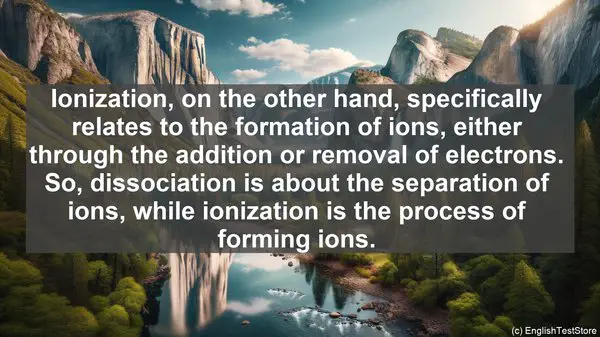Introduction
Welcome to today’s lesson on ocean acidification. As you delve deeper into this subject, you might come across certain words that can be confusing. In this lesson, we will address the top 10 commonly confused words in ocean acidification studies, ensuring that you have a clear understanding of each term. So, let’s get started!
1. Acidification vs. Acid Rain
The first pair of words that often create confusion is ‘acidification’ and ‘acid rain.’ While both involve the presence of acid, they refer to different phenomena. Acidification specifically relates to the increase in acidity of water bodies, such as oceans, due to various factors. On the other hand, acid rain refers to the precipitation that contains high levels of acidic components. So, remember, acidification is about the overall increase in acidity, while acid rain is a type of precipitation.

2. pH vs. Acidity
Another common confusion arises between ‘pH’ and ‘acidity.’ pH is a measure of the hydrogen ion concentration in a solution, indicating its acidity or alkalinity. It is a logarithmic scale, ranging from 0 to 14, with 7 being neutral. On the other hand, acidity refers to the presence of acid in a solution. While pH gives a quantitative value, acidity is a qualitative term. So, when discussing the level of acid in a solution, we use pH, and when referring to the presence of acid, we use acidity.
3. Dissolution vs. Erosion
When it comes to the process of material breakdown, ‘dissolution’ and ‘erosion’ are often used interchangeably, but they have distinct meanings. Dissolution refers to the process of a solid substance, such as a mineral, dissolving into a liquid, like water. On the other hand, erosion involves the physical removal or wearing away of materials, such as rocks or sediments, by external factors like water or wind. So, dissolution is about the chemical breakdown, while erosion is the physical wearing away.

4. Carbonate vs. Bicarbonate
Carbonate and bicarbonate are two forms of the carbonate ion, which plays a crucial role in ocean acidification. Carbonate (CO3^2-) has a higher pH value and is more alkaline, while bicarbonate (HCO3^-) is slightly acidic. In the context of ocean acidification, the balance between these two forms is essential, as it affects the availability of carbonate ions for marine organisms. So, carbonate is more alkaline, and bicarbonate is slightly acidic.
5. Calcification vs. Photosynthesis
Calcification and photosynthesis are two vital processes in marine ecosystems. Calcification refers to the ability of marine organisms, such as corals or shellfish, to build their calcium carbonate structures, like shells or reefs. On the other hand, photosynthesis is the process by which plants, algae, or phytoplankton convert sunlight, carbon dioxide, and water into energy, releasing oxygen as a byproduct. While both processes are essential, they serve different functions in the marine environment.
6. Buffering vs. Neutralizing
In the context of ocean acidification, ‘buffering’ and ‘neutralizing’ are often mentioned. Buffering refers to the ability of a solution, such as seawater, to resist changes in its pH, even when exposed to acidic or alkaline inputs. It acts as a stabilizer, minimizing the impact of acidification. On the other hand, neutralizing involves the complete elimination of acidity, resulting in a pH of 7, which is neutral. So, buffering helps maintain the balance, while neutralizing eliminates acidity.
7. Dissociation vs. Ionization
When discussing the behavior of compounds in water, ‘dissociation’ and ‘ionization’ are often used. Dissociation refers to the separation of a compound into its individual ions, which can be positive (cations) or negative (anions). Ionization, on the other hand, specifically relates to the formation of ions, either through the addition or removal of electrons. So, dissociation is about the separation of ions, while ionization is the process of forming ions.
8. Algae vs. Phytoplankton
Algae and phytoplankton are often used interchangeably, but there is a distinction between the two. Algae is a broader term that encompasses various photosynthetic organisms, including seaweeds or microalgae. Phytoplankton, on the other hand, specifically refers to the microscopic, free-floating photosynthetic organisms that form the base of the marine food chain. So, while all phytoplankton are algae, not all algae are phytoplankton.
9. Dissolved vs. Particulate
When discussing substances in water, ‘dissolved’ and ‘particulate’ are commonly used. Dissolved substances are those that are molecularly dispersed in the water, often at the ion or molecular level, and are not visible to the naked eye. Particulate substances, on the other hand, are larger in size and can be seen as particles or suspended solids. So, dissolved substances are molecularly dispersed, while particulate substances are visible as particles.
10. Adaptation vs. Acclimation
The final pair of words that often create confusion is ‘adaptation’ and ‘acclimation.’ While both involve an organism’s response to changing environmental conditions, they have different meanings. Adaptation refers to a long-term, genetic change in a population over generations, enhancing its survival in a particular environment. Acclimation, on the other hand, is a short-term, reversible adjustment in an individual organism’s physiology or behavior to its immediate surroundings. So, adaptation is a long-term change, while acclimation is a short-term adjustment.
